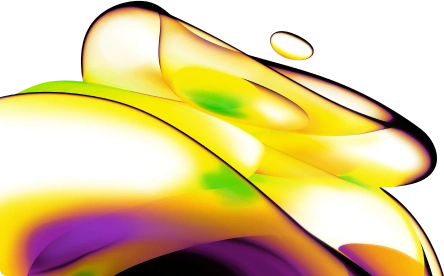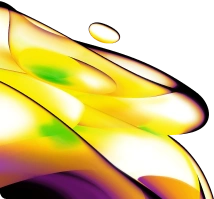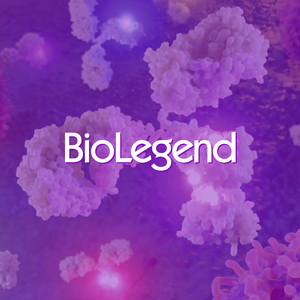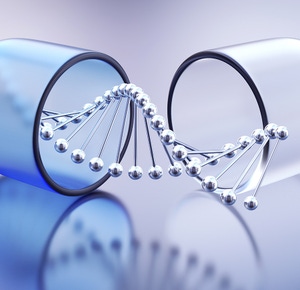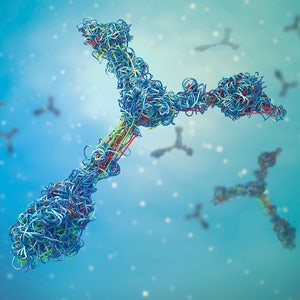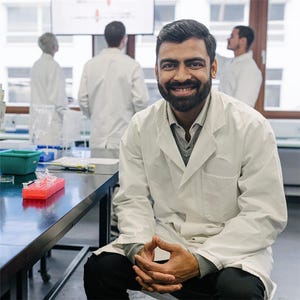

AlphaLISA SureFire Ultra Human Total c-Kit Detection Kit, 50,000 Assay Points
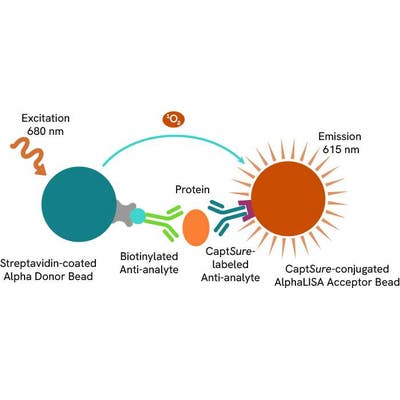

AlphaLISA SureFire Ultra Human Total c-Kit Detection Kit, 50,000 Assay Points
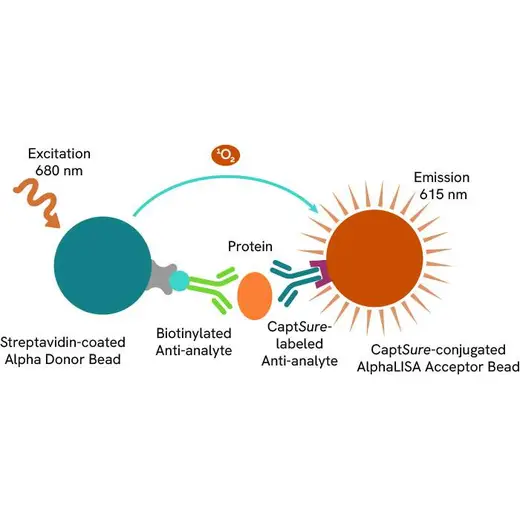


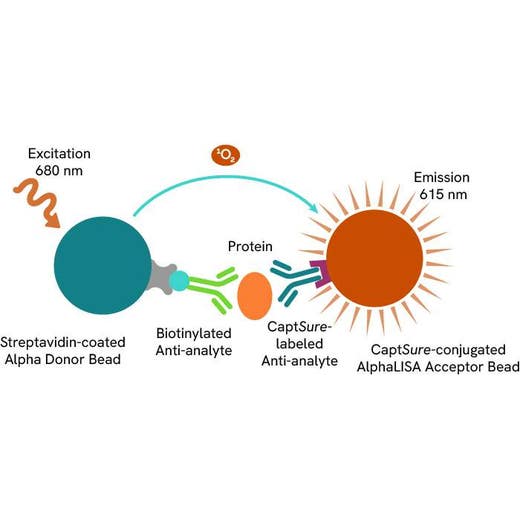


The AlphaLISA™ SureFire® Ultra™ Human Total c-Kit assay is a sandwich immunoassay for quantitative detection of total c-Kit in cellular lysates using Alpha Technology.
| Feature | Specification |
|---|---|
| Application | Cell Signaling |
| Protocol Time | 2h at RT |
The AlphaLISA™ SureFire® Ultra™ Human Total c-Kit assay is a sandwich immunoassay for quantitative detection of total c-Kit in cellular lysates using Alpha Technology.



AlphaLISA SureFire Ultra Human Total c-Kit Detection Kit, 50,000 Assay Points



AlphaLISA SureFire Ultra Human Total c-Kit Detection Kit, 50,000 Assay Points



Product information
Overview
c-KIT, also known as CD117, is a receptor tyrosine kinase activated by stem cell factor (SCF). Ligand binding triggers receptor dimerization, autophosphorylation, and activation of downstream pathways, including MAPK, PI3K/AKT, and JAK/STAT. Dysregulated c-KIT signaling drives tumor proliferation and survival in gastrointestinal stromal tumors (GIST), leukemia, and melanoma.
The AlphaLISA SureFire Ultra Human Total c-Kit Detection Kit is a sandwich immunoassay for the quantitative detection of total c-Kit in cellular lysates, using Alpha Technology.
Formats:
- The HV (high volume) kit contains reagents to run 100 wells in 96-well format, using a 60 μL reaction volume.
- The 500-point kit contains enough reagents to run 500 wells in 384-well format, using a 20 μL reaction volume.
- The 10,000-point kit contains enough reagents to run 10,000 wells in 384-well format, using a 20 μL reaction volume.
- The 50,000-point kit contains enough reagents to run 50,000 wells in 384-well format, using a 20 μL reaction volume.
AlphaLISA SureFire Ultra kits are compatible with:
- Cell and tissue lysates
- Antibody modulators
- Biotherapeutic antibodies
AlphaLISA SureFire Ultra kits can be used for:
- Cellular kinase assays
- Receptor activation studies
- High-throughput screening for preclinical studies
Specifications
| Application |
Cell Signaling
|
|---|---|
| Automation Compatible |
Yes
|
| Brand |
AlphaLISA SureFire Ultra
|
| Detection Modality |
Alpha
|
| Protocol Time |
2h at RT
|
| Shipping Conditions |
Shipped in Blue Ice
|
| Target |
c-KIT
|
| Target Class |
Phosphoproteins
|
| Target Species |
Human
|
| Technology |
Alpha
|
| Therapeutic Area |
Oncology
|
| Unit Size |
50,000 assay points
|
Video gallery

AlphaLISA SureFire Ultra Human Total c-Kit Detection Kit, 50,000 Assay Points

AlphaLISA SureFire Ultra Human Total c-Kit Detection Kit, 50,000 Assay Points

How it works
Total-AlphaLISA SureFire Ultra assay principle
The Total-AlphaLISA SureFire Ultra assay measures the expression level of a protein target in a cell lysate.
The Total-AlphaLISA SureFire Ultra assay uses two antibodies which recognize two different distal epitopes on the targeted protein. AlphaLISA assays require two bead types: Acceptor and Donor beads. Acceptor beads are coated with a proprietary CaptSure™ agent to specifically immobilize the assay specific antibody, labeled with a CaptSure tag. Donor beads are coated with streptavidin to capture one of the detection antibodies, which is biotinylated. In the presence of targeted protein, the two antibodies bring the Donor and Acceptor beads in close proximity whereby the singlet oxygen transfers energy to excite the Acceptor bead, allowing the generation of a luminescent Alpha signal. The amount of light emission is directly proportional to the quantity of protein present in the sample.

Total-AlphaLISA SureFire Ultra two-plate assay protocol
The two-plate protocol involves culturing and treating the cells in a 96-well plate before lysis, then transferring lysates into a 384-well OptiPlate™ plate before the addition of Total-AlphaLISA SureFire Ultra detection reagents. This protocol permits the cells' viability and confluence to be monitored. In addition, lysates from a single well can be used to measure multiple targets.
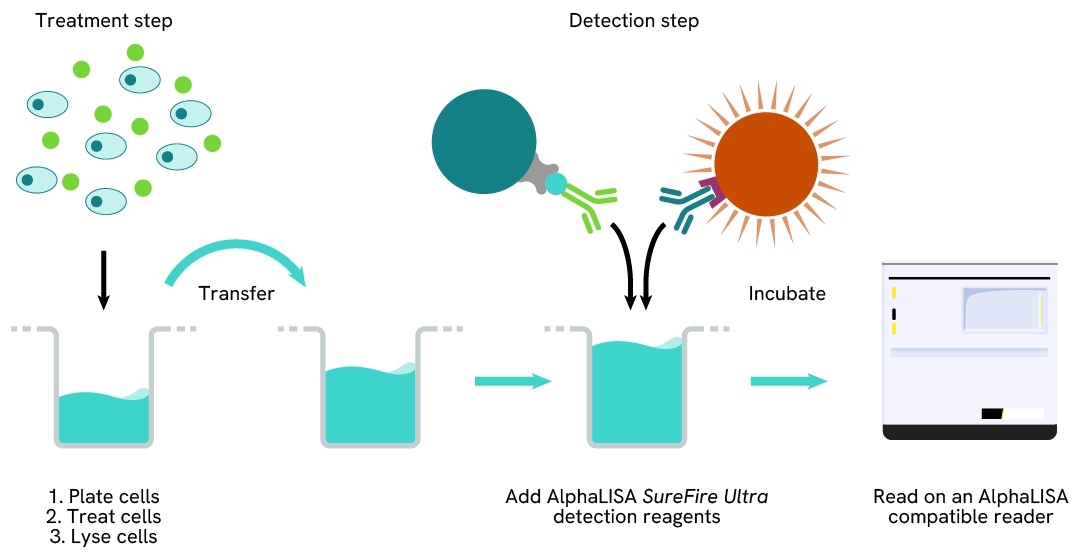
Total-AlphaLISA SureFire Ultra one-plate assay protocol
Detection of Total target protein with AlphaLISA SureFire Ultra reagents can be performed in a single plate used for culturing, treatment, and lysis. No washing steps are required. This HTS designed protocol allows for miniaturization while maintaining AlphaLISA SureFire Ultra quality.
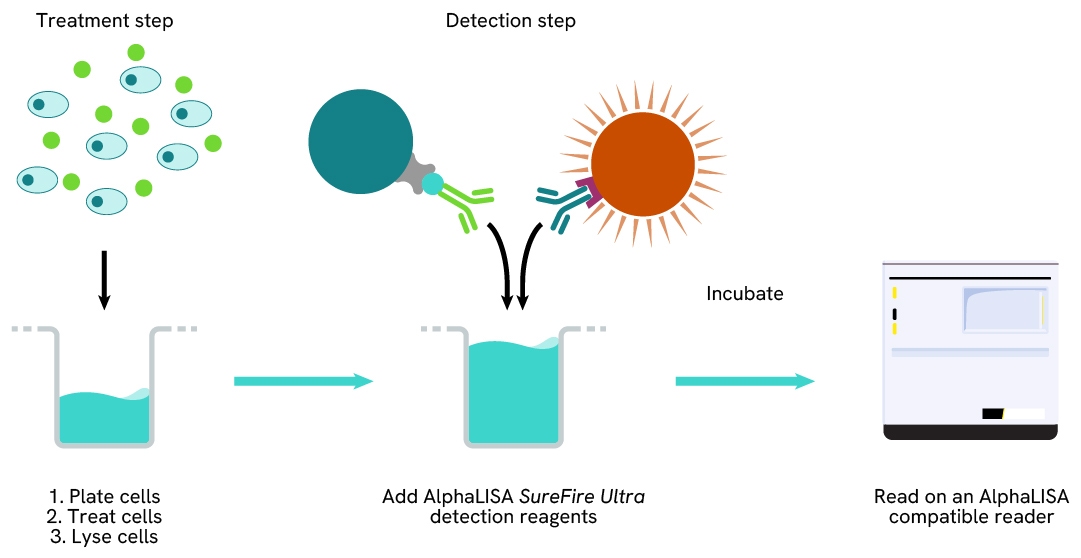
Assay validation
Inhibition of Total c-Kit in endogenous in RT4 cells
RT4 cells were seeded in a 96-well plate (40,000 cells/well) in complete medium, and incubated overnight at 37°C, 5% CO2. The cells were treated with 10 µM Masitinib or Imatinib for 6 hours in medium containing 1% FBS.
After treatment, the cells were lysed with 100 µL of lysis buffer for 10 minutes at RT with shaking (350 rpm). c-Kit Total levels were evaluated using AlphaLISA SureFire Ultra assay. For the detection step, 10 µL of cell lysate (approximately 4,000 cells) was transferred into a 384-well white OptiPlate, followed by 5 µL of Acceptor mix and incubated for 1 hour at RT. Finally, 5 µL of Donor mix was then added to each well and incubated for 1 hour at RT in the dark. The plate was read on an Envision using standard AlphaLISA settings.
As expected, Masitinib and Imatinib triggered a decrease in the levels of Total c-Kit.
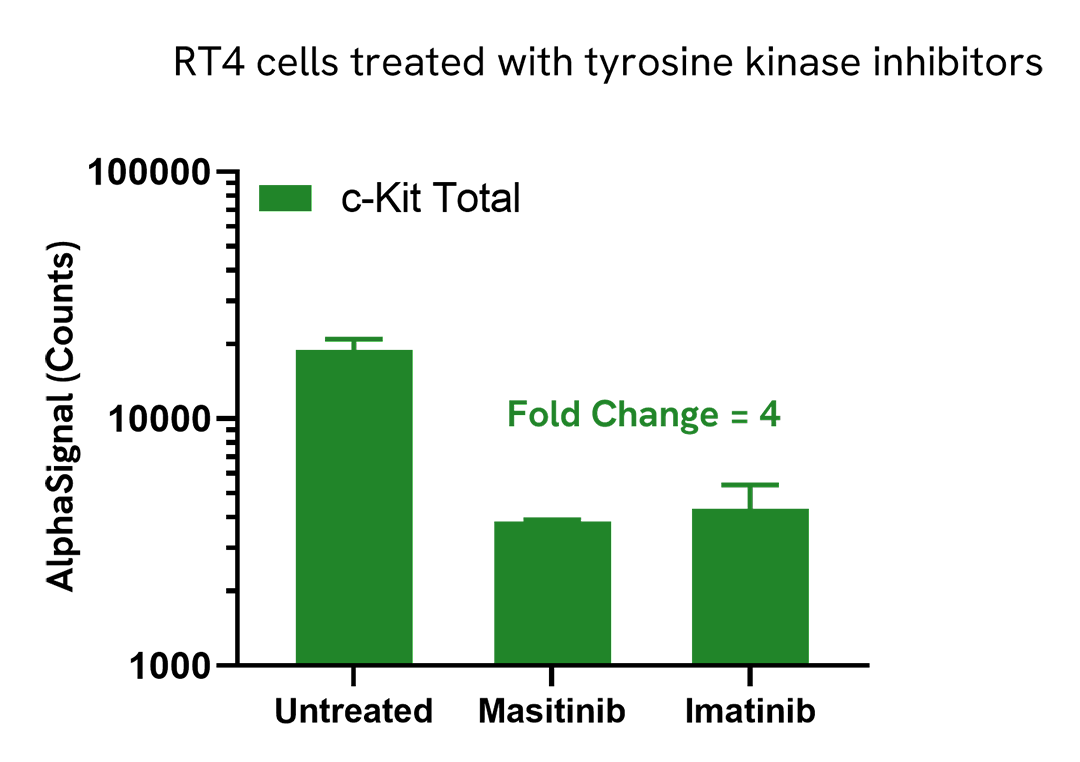
Inhibition of Total c-Kit in endogenous cellular models
Kasumi-1 cells were seeded in a 96-well plate (400,000 cells/well) in media + 1% FBS. The cells were treated with 10 µM Luminespib for 6 hours.
After treatment, the cells were spun down at 300 RCF for 5 minutes, washed with HBSS and then lysed with 150 µL Lysis Buffer for 10 minutes at RT with shaking (350 rpm). c-Kit Total levels were evaluated using respective AlphaLISA SureFire Ultra assays. For the detection step, 10 µL of cell lysate (approximately 25,000 cells) was transferred into a 384-well white OptiPlate, followed by 5 µL of Acceptor mix and incubated for 1 hour at RT. Finally, 5 µL of Donor mix was then added to each well and incubated for 1 hour at RT in the dark. The plate was read on an Envision using standard AlphaLISA settings.
As expected Luminespib triggered a decrease in the levels of Total c-Kit after treatment.

Versatility of Total c-Kit assay in various cell lines
Cells were seeded at 40,000 cells/well in a 96-well culture plate in complete medium and incubated overnight at 37°C, 5% CO2. Cells were lysed with 100 µL of Lysis Buffer.
Suspension cells were seeded at 250,000 cells/well (200 µL/well) in a 96-well culture plate in HBSS + 0.1% BSA and lysed with 50 µL 5X Lysis Buffer.
c-Kit Total levels were evaluated using respective AlphaLISA SureFire Ultra assays. For the detection step, 10 µL of cell lysate was transferred into a 384-well white OptiPlate, followed by 5 µL of Acceptor mix and incubated for 1 hour at RT. Finally, 5 µL of Donor mix was then added to each well and incubated for 1 hour at RT in the dark. The plate was read on an Envision using standard AlphaLISA settings. Approximately 4,000 cells/datapoint for adherent cell lines and 10,000 cells/datapoint for suspension cell lines.
Total c-Kit expression is dependent on cell type. As expected, expression was significantly high in RT4, Kasumi-1 and HEL92.1.7 cell lines while no signal was observed in HeLa, MCF7 and A431 cells.
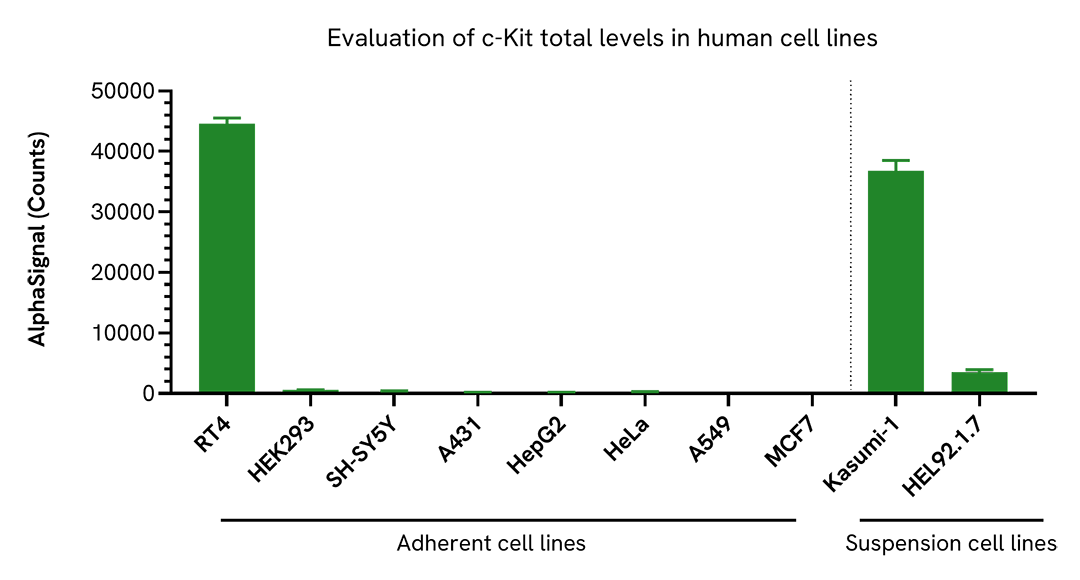
Resources
Are you looking for resources, click on the resource type to explore further.
The definitive guide for setting up a successful AlphaLISA SureFire Ultra assay
Several biological processes are regulated by...
Discover Alpha SureFire® Ultra™ assays, the no-wash cellular kinase assays leveraging Revvity's exclusive bead-based technology...
This document includes detailed tables listing HTRF™, AlphaLISA™ SureFire® Ultra™, and Alpha SureFire® Ultra™ Multiplex assays...
Loading...


Recently Viewed
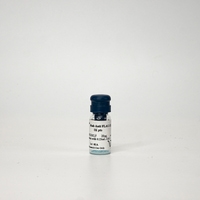
How can we help you?
We are here to answer your questions.
